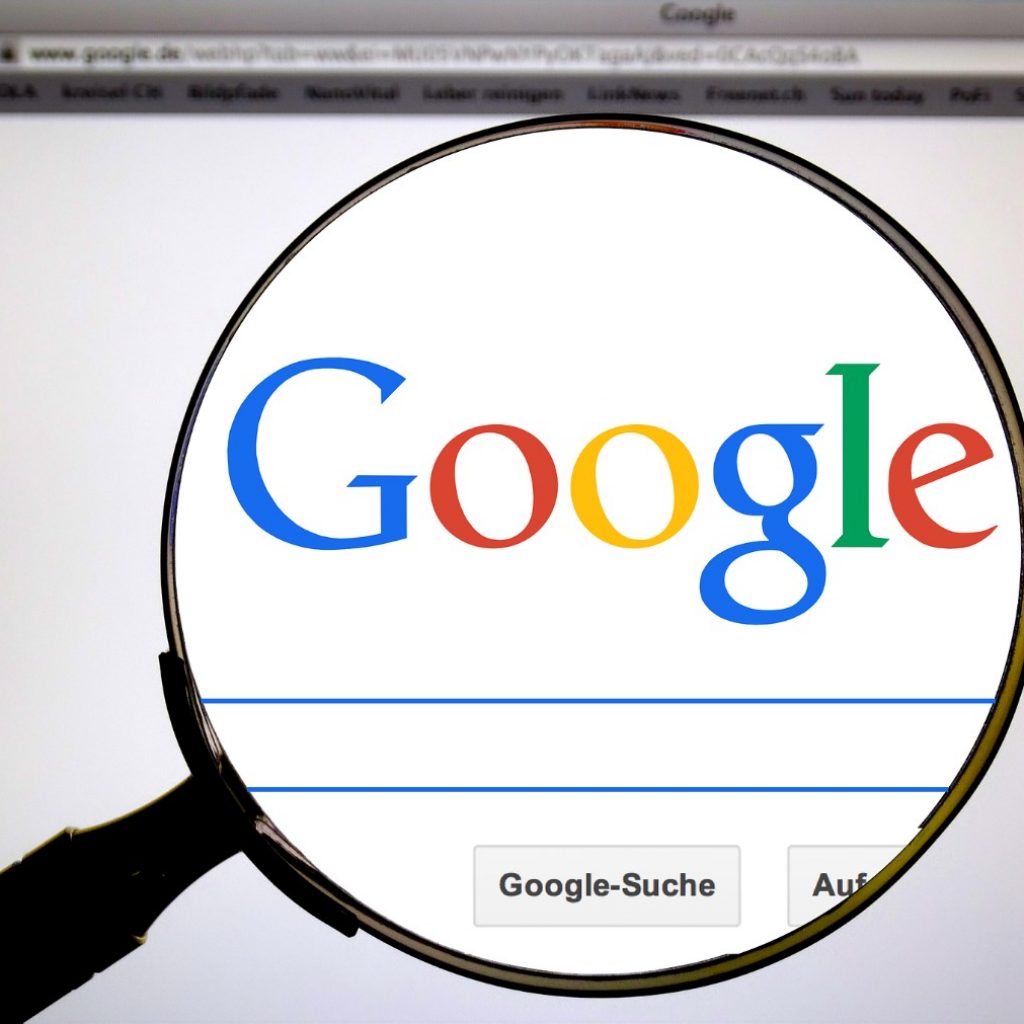The Google profile image your local business displays is your first impression to prospects in the digital marketplace. Like all first impressions it is the most essential part in building the business relationship with your customers!
Your Google Profile Image Is Your Customer’s First Impression
Your first impression with a prospective client is everything for a business. In an in-person meeting, Forbes and Business Insider both say you have only 7 seconds to establish a strong, positive first impression.
Jordan Belfort— the guy who made millions upon millions of dollars by training people to sell penny stocks on cold calls over the phone— says in his sales seminars that that crucial time to make a positive first impression is actually only 4 seconds.
In those 4 seconds, you have to nearly instantly establish that you are an authority in your field, someone who can be relied on to solve a problem for your customer or help the customer achieve their goal.
And remember that someone’s attention span online is even shorter than it is in person, making that first impression all the more crucial to get exactly right.
A Picture Is Worth A Thousand Words
A picture really is worth a thousand words. That’s how we human beings are wired up and the proof is in the putting. That is the putting of images into every digital space.
It’s not very common any more to read an article, blog post, email, advertisement, or social media post that doesn’t lead with a striking, memorable, and interesting image.
Savvy and professional Internet marketers who are in it to win— that is: ship more products or services for their business or their client— do more of what works, and there’s no doubt that images draw a user’s eye’s more, increase their engagement, and result in more click-throughs and purchases.
Vero conducted an analysis of over 5000 email campaigns and found that emails with images had a 42% higher CTR (click-through-rate) than campaigns without images.
HubSpot did a survey and found that 65% of respondents like emails better if they contain mostly images, markedly higher than the 35% who said they prefer mostly text.
According to Social Media Examiner in a 2016 white paper, 37% of marketers said visual marketing was the most important form of content for their business, second only to blogging (38%).
According to Kissmetrics, tweets that contain images receive 18% more clickthroughs, 89% more favorites, and 150% more retweets than tweets that have no images.
Brainrules discovered something interesting about images and human memory: When people hear information, they’re likely to remember only 10% of that information three days later. However, if a relevant image is paired with that same information, people retained 65% of the information three days later.
When images clearly matter so much in online marketing, it is absolutely staggering that the search industry has lagged as much as it has in the adoption of images as part of the search engine results page.
All the main US search engines, like Google and Bing, typically display text-based results only. Whereas many directory listings like the BBB and Yellow Pages are traditionally NAP based info (with NAP standing for name, address, phone number).
Google Profile Image Results by Platform
The trend is now changing with Google and Bing starting to catch up as they face competition from other search starts ups, including vertical specific search platforms.
Yelp has profile images in basically all of its results. In response, Google has recently started trying logos or images in its local search “snack pack” results.
At present images are included in search listings or results in a number of ways, but with no real consistency across different platforms. Below is a basic overview of how images appear in search results:
Google local search snack pack (desktop and mobile): Sometimes images are included, but only in search results for certain categories like food and beverage, ballet schools, hotels, and entertainment (etc.). Some SERPs with no images were: dance studios, plumbers, clothing/fashion, pool supplies, and attorneys.
Google Maps (desktop): All listings will contain images.
Google Maps (mobile): Images are displayed only for those categories that have images in snack pack results.
Google mobile app (Android): Knowledge graph with image when location intent is expressed by the user.
Google mobile app (iOS): You’ll get a thumbnail image on a result for only very specific searches with single search result matches.
Images will always appear on Google when your business is selected from within search results and the business profile or knowledge graph is displayed.
As you can tell from the overview above, there is no clear reasoning behind why some local search listings will display images while others will not. Regardless, all signs point to the trend of increasing use of images across all platforms, and if Google keeps moving in the same direction it currently is, we’ll see images used more often.
With the unpredictability of Google’s image selection and the increasing likelihood that your images will be included in results, it is important to follow some good pro-tips and best practices for the use of your Google profile image to get the best results from local search listings.
These following eight pointers will help you ensure you are making the very best possible first impression.
- Don’t Let Google Pick Your Image for You
If images are displaying next to results your local business shows up in, Google will still probably assign a picture to your business’s search result even if you don’t claim your Google My Business profile and upload a graphic.
One common result is Google will simply throw out a Google Street View image of your storefront, which may or may not look right.
If you’re lucky, those photos will have some kind of identifying store sign visible in them, but other times the photo may be of a wooden fence or brick wall next to your property, or an unflattering angle of the strip mall where your business operates.
Google may also make use of a “local guide,” a user who wants to take part in their community by cultivating its publicity on Google search results. They will take pictures of storefronts and places of interest, then upload them and tag your business.
But why on earth would you want a random person with this much free time doing your business’s marketing for you?
Additionally, anyone can post pictures to a business’s Google list with just a couple taps on their phone. For instance, someone may take a picture of their favorite dish or cocktail at a nice restaurant or a band they like performing at a venue, and post it to the business page.
But not every well-meaning person has a good eye for what will look desirable on your listing and they can also add unflattering pictures. And not every person is well-meaning.
Be responsible for your success and the appearance of your business to your potential customers. Don’t let random people brand your business and a Google bot pick which random image to display on the search results for you.
Take control of your own destiny, and don’t let a Google bot decide what works best for your business.
- Select Your Google Profile Image in Google My Business
Why wouldn’t you want to use every free resource Google is providing you to manicure and polish your public image for potential customers?
Google allows you to upload a Google profile image for your Google My Business, a business logo, and a cover photo as well, and you can also include interior and exterior photographs of your business, your employees, your equipment, your products, (etc.).
For a small investment that will make your business look incredibly professional, hire a photographer in your area who has a quality DSLR camera.
If you put out the call, you’ll find a photography hobbyist with the equipment and the eye to make your business look really fantastic and professional on Google search results.
- Keep Changing It Up Until Google Displays The Image You Want
For some reason, Google still reserves the ability to pick which image is displayed first regardless of your preference.
Google won’t say exactly how their algorithm picks the image for you (their typical answer to these kind of questions is it’s always changing), but it does give a general idea of what goes into consideration.
Google somehow determines what photo represents your service or product most accurately, and is interested in factors such as the image format, resolution, size, and the quality of the picture.
So adding photos that well represent your business and the products or services you offer is a good first step toward getting the attractive Google profile image you want.
If the exact picture you prefer for your profile pic isn’t showing up as the first image, you can keep changing it up until Google displays the profile image you want.
So you can go in and delete pictures (like any that Google picks that you don’t want as your profile picture), then re-upload different versions of the pic you like, cropped or subtly altered in some way, higher resolution, lower resolution, and you can try uploading the images in a different order.
With enough tinkering, you can get it to turn out the way you want.
- Check Your Google Profile Image Frequently
The really frustrating thing about Google’s patent answer to any questions about its algorithms is that it’s true— the algorithm is always changing.
Google is always trying to find a way to make its services work better for its customers, so the only thing you can expect not to change, is that there will always be more changes.
Apparently, the price of a good, quality digital storefront in the online market place is eternal vigilance.
There are plenty of online reports out there about Google profile images suddenly and unexpectedly being switched without any changes or input from the business owner.
So make sure that you check how your business looks in search results and your Google profile image on every digital platform and device with some regularity for any changes that you don’t consider ideal.
Another important countermeasure to take is simply make sure that every picture you upload is at least adequate as a profile pic. If you want to make your results really bulletproof, make sure every picture would have your enthusiastic endorsement as a profile pic.
Then no matter what image Google selects, your business will look good and you’ll be happy.
- Use Only Best Quality Images
High quality graphics is not just an aesthetic preference on Google’s part. The market responds to it.
According to Michael Hirsch, an Image Editing Expert and Consultant at Hi-Tech BPO:
“Images are very powerful and when it comes to running an e-commerce store, images are core requirement. Before buying, shoppers like to check out an image to get a visual sense of the product. And the image can make or break the sale.
e-commerce product images deliver an items value and functionality while inspiring shoppers to buy. Whenever possible, product images should also be lean and fast loading. The challenge, then, is to produce large, attractive images at relatively small file sizes.”
So if you are using an image of your product or service as your Google profile image, it can have a direct effect on a potential client’s perception of your business.
According to Dave Young at Practical eCommerce: “Product presentation is key to increasing customer loyalty and generating sales. Merchants need to understand two concepts before they post images online: Consistency and quality.”
Betsy Emery, CEO of TELLUS, an award-winning web design firm, says “consistency and quality of product images directly impact conversion rate.”
Sheila Dahlgren, senior vice president of marketing at Scene7 says, “Pictures sell. People do not buy what they cannot see, so the higher the quality and resolution of your imagery, the better your results will be.”
- Make Sure The Image Is Centered and Framed Properly
Even a quality, professionally taken photo with a good digital camera will not reflect well on your business if it is not properly formatted, cropped badly, or framed wrong.
Be sure the subject of your photos, whether people or products, is centered, and try to anticipate how it will be framed in thumbnail images for mobile devices, cropped into a square shape for snack pack listings, and formatted for landscape cover photos in map listings.
- Be Wary of Using Stock Images
It is certainly true that some stock images are very nicely shot and have a certain artistic charm that many of us could not capture ourselves.
But often times stock images are easy to spot and they make your business appear inauthentic because it’s not a real picture of your business or your products.
A prospect can spot a stock image because it has a certain kind of lighting and composition, or even because it’s an overused photo they’ve seen on another business’s website. Talk about watering down your first impression with a prospect!
Earnestness and authenticity are very important to consumers, now more than ever before. People want to deal with a business that it genuine, and that takes the effort to present themselves to the marketplace, instead of flashing a stock photo.
- Google’s Not The Only Game in Town
It may be the biggest, and that’s important, but it’s not the only. Be sure you are adding images to your listing on YellowPages.com, Yelp, and other vertical listings like Avvo and OpenTable.
All of these directory services allow you to manage your online presence in their digital spaces including your profile and images.




